|
Update: 4/23/18 Sadly, the passing yesterday of Nabi Tajima, the Japanese woman that was the oldest person in the world, now places Giuseppina Projetto-Frau as the second oldest person in the world. 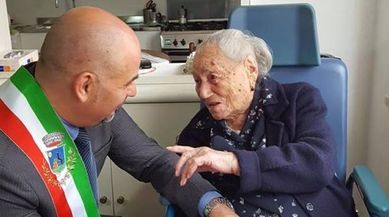 Nonna Pina joking with the mayor Nonna Pina joking with the mayor by Jerry Finzi Italy’s Giuseppina Projetto-Frau is is about to turn 116 on May 30th and is currently the oldest living person in Europe. Several days ago in Barcelona, 116 year-old Spaniard, Ana Vela Rubio passed away. Ana was born on October 29th, 1901 which made her the longest living European. Ana passes the baton to Giuseppina, bringing back the title formerly held by Emma Morano, who died in March 2017 at 117 years old, who was also considered to be the last human who lived during the 19th century. Born in Sardinia in 1902, Projetto has been dubbed La Nonna d'Italia (the grandmother of Italy). She is the third oldest person alive in the world today, after two Japanese women. Giuseppina (her friends call her Pina) was born in 1902 in La Maddalena--a small island off Sardinia's northern tip. Her father’s name was Cicillo, and she had four siblings. Her grandfather had moved to La Maddalena from Sicily in the wake of the revolt of Garibaldi. At 5 years old, after losing her mother, along with with three of the four sisters, she was sent to the female orphanage Satta-Sequi of Ozieri on the main island of Sardinia, where she lived until she was 21. Pina calls the the orphanage il Collegio, where she learned the art of embroidery, a craft she practiced her entire life. Pina has vivid memories of Ozieri... the fountain with the two marble lions that is located just in front of the "Collegio", the Attilio Pintus pastry shop and the "Swiss" café where she used to buy candy. She married twice, but bore no children of her own. Her second husband, Giuseppe Frau, had 3 children that Nonna Pina raised with great love. In 1946, when her son moved to Montelupo Fiorentino near Florence for work, she moved with him, where she still resides today with one of her daughters, Julia. Her son was tragically lost when trying to save bathers from drowning--a sorrow she still carries with her. Pina worked many years for the Bitossi Ceramics factory in Montelupo Fiorentino. She attributes some of her longevity to eating chocolate. She is one of tens of thousands of Italians over 100 and still going. Many scientists have sought to identify the key to Italy’s extraordinary longevity, with suggestions ranging from a Mediterranean diet to hormones to a good sex life. © GVI
0 Comments
Yet Another Update 4/17/18: According to press release dated March 7, 2018, Starbucks is supposedly interviewing candidates for positions to fulfill their push into the Italian coffee market--in Milan. This makes it over two years since they first announced their intention to bring their Trenta-sized coffee concept to la Bel Paese, home of espresso. Read more HERE: Update 2/21/17: It seems every year about this time, Starbucks puts out press releases saying they are opening Starbucks stores all over Italy. last year (read below) they said they were going to open their very first Starbucks in Italy. That never happened. I don't think there's much support for Starbucks in Italy. Having their espresso Italian style every morning at home with their Moka pots or at their neighborhood breakfast bar on the way to work is simply too ingrained in the Italian culture for things to change now. Starbucks announced last Thursday that it plans to open 200 to 300 stores in Italy starting next year. Really? Where's that first shop they promised last year? Now they claim that in June of next year--2018--they will will open four shops in Rome and Milan. "If the first phase of expansion goes well" (what happened to last year's "first phase"?), they are promising 300 stores opening in Italy before 2023. Basta! Enough promises. Besides, that's way too long for Italians to sit and wait for them. It's much faster to fire up the moka pot... --Jerry Finzi From 3/1/2016: Starbucks announced today that they will be opening their very first coffee house in Milan in the first part of 2017. What? In 2017, they say? Well, it makes sense that their plans will take that long, especially when you consider how Starbucks' offerings in huge take out coffee cups have little to do with the way the average Italian indulges in their espresso. It might take the company a full year (or more) to test market, focus group, finesse, and then fine tune a new batch of caffeine alternatives to the ultimate coffee drinkers on Planet Earth--the Italians. I predict the offerings will look nothing like what American Starbucks offer here in the States. In the early 1980s, Starbucks' CEO Howard Schultz visited Italy and supposedly was inspired to bring what he called the "romance and theater" of Italian coffee bars and baristas to the U.S. market. I'm wondering where in the Italian Boot did he visit that caused him to create such an over-blown, over-priced and over-sized coffee product that has little to do with the culture of coffee consumption and tradition in Italy. 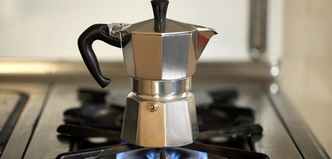 Home brewing Home brewing In most coffee shops (called bars in Italy) there is little "romance" and the only "theater" is standing at the bar (either that, or get charged extra for a table), chomping down a cornetto and slurping down your espresso after which the mega-dose of caffeine propels you on your way toward the morning's labor. Perhaps he mistook a simple fact for "theater": the barista knows the locals because bars are local, neighborhood places in Italy... every neighborhood has them, each one with a small family of baristi and neighbors. Sure, some of the fancy coffee bars in tourist centers might be pretty plush, but most are plain and proactical. This is hard to duplicate on a fast-food chain store model. And I'm not sure that the Italians will put up with paying four to six times the price to what they currently pay for an espresso. Every morning, the average Italian either makes their own small cup of intense espresso with their little art deco Moka coffee pot on their home gas range, or they stand for a couple of minutes in their neighborhood "bar" at an actual bar counter (bars serve coffee in Italy) and down a little cup (usually half full) of dense, hot espresso--usually with some sugar added. This is part of their colazione (breakfast) which nationwide consists of an espresso or cappuccino and a sweet pastry, such as a cornetto (the Italian, less flaky version of a croissant). There must be a good reason that after 33 years of Starbucks' great success and with about 21,000 stores in 70 countries (with 38 in Europe), the brand has never opened a store in Italy, the supposed home of its inspiration. Is it because the look and feel of both the Starbucks experience and its offerings have nothing to do with coffee bars in Italy? It depends on what the meaning of their "success" is too... as it seems that every couple of years Starbucks seems to announce mass closings of its stores, anywhere from hundreds to thousands. Have they become over-saturated? Italy is going to suck up a lot of marketing funds to convince the average Italian to gulp instead of slurp. Is success really guaranteed in Italy... a country with 22 different regions each with their own regulations and laws and customs? Is it guaranteed in a country where people think it's a Cardinal Sin to add milk to coffee at any other time than early in the morning? Is success guaranteed where eating and drinking while walking on the street or in your car is socially unacceptable and considered disgustoso? Will it be a success where family run, small shops in local towns and villages with loyal customers are the mainstay of the Italian economy? Starbucks claims that it will enter the birthplace of espresso "with humility and respect". Doesn't that sound like a scene from The Godfather? Are they going to have to bow and kiss a few knuckles, too? Are they going to make Italians an offer they can't refuse? Starbucks needed a partner to accomplish their plan in Italy, so they selected Italian real estate/mall developer, Gruppo Percassi. The company, based in Bergamo, will license and run the Starbucks brand in Italy. Even signore Percassi himself admitted: "We know that we are going to face a unique challenge with the opening of the first Starbucks store in Italy, the country of coffee, and we are confident that Italian people are ready to live the Starbucks experience, as already occurs in many other markets." There are some hard facts that will prevent Italians from easily accepting the Starbucks brand. While the espresso machine was invented in Italy, it turns out that Italy doesn't drink anywhere near the amount of coffee as other countries, especially when compared to the United States--we drink about four times as much coffee per person as Italians! Italy ranks as only the seventh largest consumer of coffee in Europe. The reasons for this are simple. Their espresso cups are small, and usually not filled completely. Unlike in other countries where one might have large cups of coffee each day, the Italians drink small amounts. I had an assistant once who drank 6-8 cups each day and even my wife, Lisa likes her coffee in over-sized mugs rather than small cups, I've never seen an Italian drinking coffee from a mug or a paper cup. They don't do take-out coffee, either. The Italian cultural attitude toward coffee consumption is also very different. Perhaps they will have a cappuccino (with milk) in the morning with a sweet pastry, then a quick espresso shot during a late morning break at the bar down the street from their office, and perhaps another espresso on the way home or after dinner. Workplaces don't have coffee machines and stations as they do here in the U.S., and most homes have at least one Moka pot... never a Mr. Coffee machine. Unlike in American homes where there might be a large pot of coffee (already brewed) in a coffee machine waiting to be consumed all during the day, an Italian likes their espresso made fresh... they drink it and they're done. Unlike the scene at a Starbucks, Italians might not take to lounging around in armchairs sipping huge take-out cups of overly sweet and pumpkin-spiced cappuccinos while surfing the Internet. They are used to getting their caffeine fix on-the-go with a quick stop at a neighborhood coffee bar. The types of coffee served at Starbucks are a caricature of what you find in Italy, some of which are completely made up. In Italy, when you ask for "un caffe" you receive an espresso. Coffee IS espresso to Italians. And if you ask for a "latte" in Italy, you get a glass of milk--yes, only milk. Latte means milk. And a Frappuccino is a trademarked name, invented by Starbucks by shoving together "cappuccino" and "frappe" together... a sweet espresso with milk married to basically a milkshake. And then there's the amount of sugar in Starbucks offerings. A Grande Vanilla Frappuccino contains more sugar than six servings of Kellog's Fruitloops! After all, there is a reason Italians stay so thin. If Starbucks opens in Italy, they will also have to be careful about how they roast their beans. Italians roast beans only until they are brown--not black, like American baristas tend to do. In fact, Italians tastes--literally, the way they sense flavors--are different than the American palette. Americans seem to tolerate overly roasted coffee with a much more bitter flavor than Italians prefer. They also don't go for overly sweet things. You can also consider the fact that Italians don't really drink iced coffee. Their cold coffee is a completely different thing. In fact, a tall glass of iced coffee would strike fear into most Italians... all that ice could cause congestione, a digestive block, and might even threaten one's life! There is an actual health code that forbids making and chilling espresso for storage. Enter the Shakerato.... a shaken and chilled espresso. Ice, espresso and sugar syrup is shaken in a metal cocktail shaker, resulting in a chilled espresso with a foamy head when poured into tall wine glasses. There are also other variations on this... Caffè Freddo and Granita di Caffè. Then there's the size difference between Italian espresso and Starbucks products. In Italy, it goes like this:
(In all cases above, the cups used are much smaller than a typical, American style 6 ounce cup.) At Starbucks things are much larger to start with:
In the end, if Starbucks does come to towns in Italy, I really wonder if it will look and feel the same as Starbucks do here in the States. It's sort of like how fast food places are a different thing entirely in Italy. They offer far more healthy food that we get here. Italians expect things to be fresh--made the same day. They shy away from overly sweet things. They really don't overindulge on food or drink. You won't see coffee-addicted loners sucking up both bandwidth and caffeine in a cushy leather chair all morning in a local hangout. Italians like socializing. They go home for long lunches to spend time with family. The spend time with friends and family after work. They would never think of parking a huge paper coffee cup into their car's cup holder.
And they are frugal. One of the reasons they stand while drinking their espresso is that if they sit at a table, they will get charged much more for the table and the table service. And I really can't see an Italian spending 10 Euros on a Grande when they can buy an espresso for 1 Euro or a really nice bottle of wine at their local alimentari for 5 or 6 Euro. Starbucks has their work cut out for them if they want to attract Italians into their shops... Time will tell if their cup is half empty or half full. --Jerry Finzi You can also follow Grand Voyage Italy on: Google+ StumbleUpon Tumblr |
Categories
All
Archive
June 2024
|


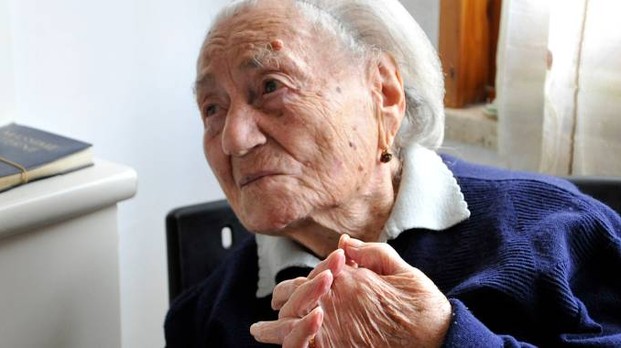
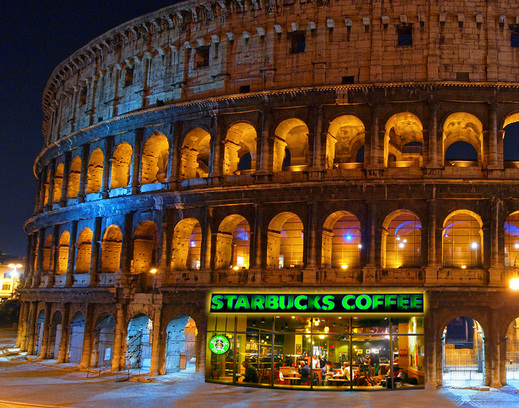
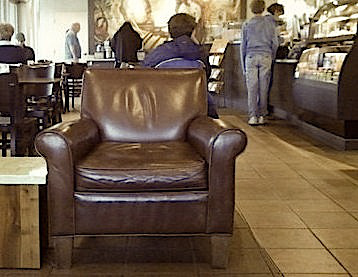
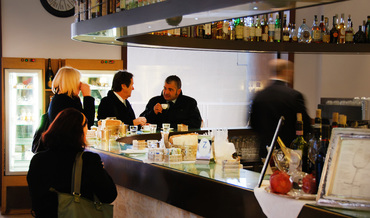
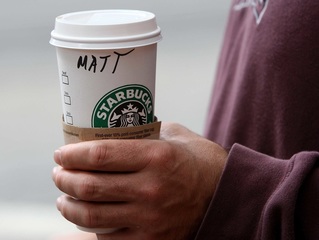
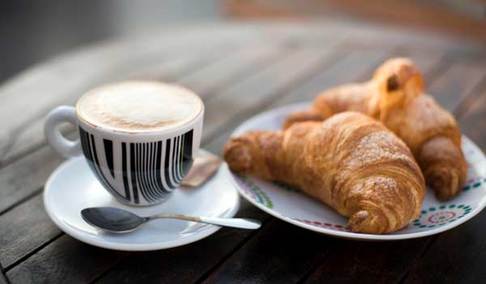
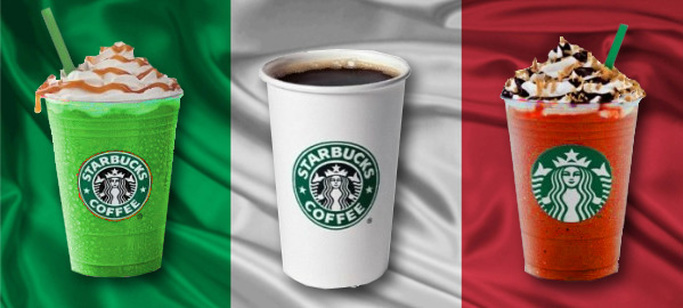
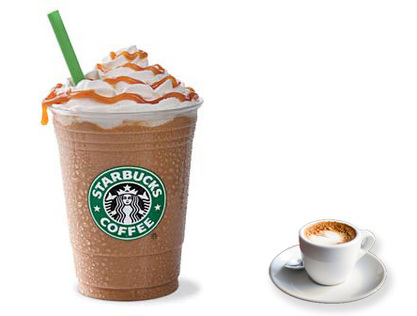
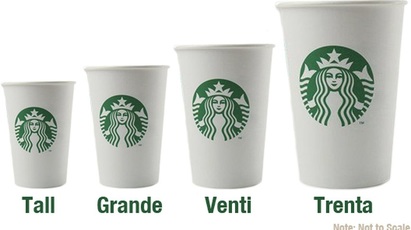
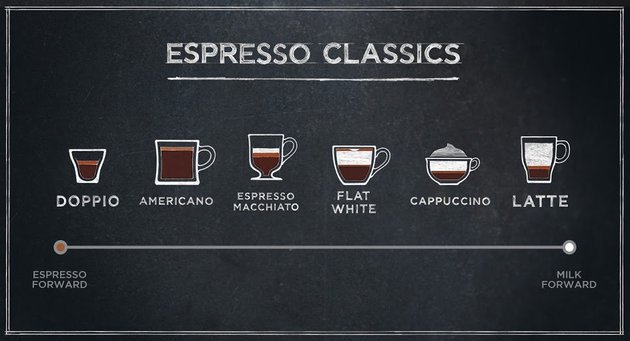
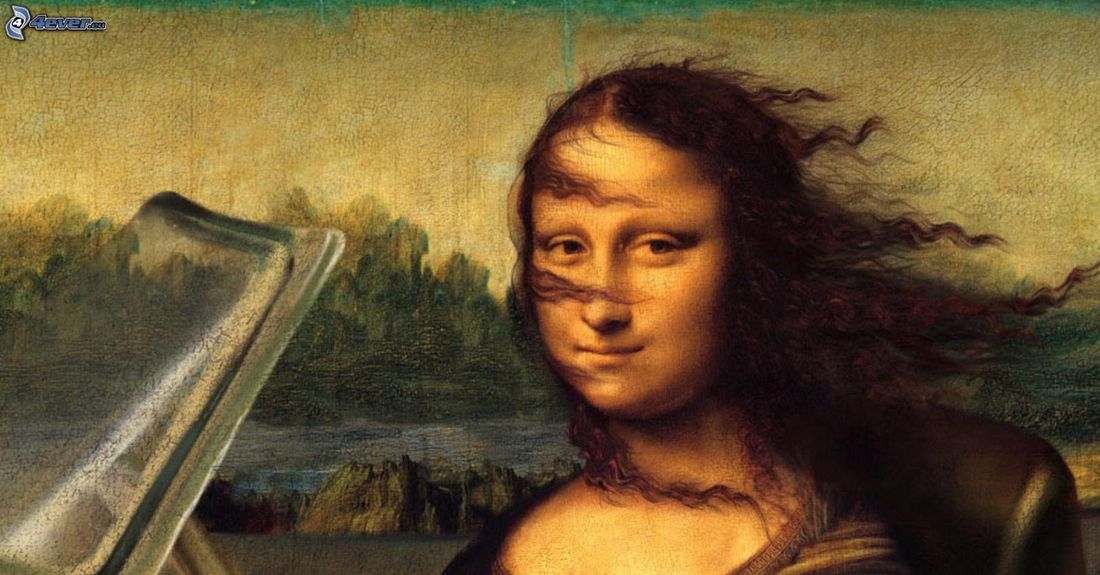
 RSS Feed
RSS Feed
